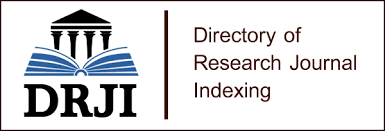ADULTERATED FOOD INDUCED FEMALE INFERTILITY IN BANGLADESH: A HINDRANCE TOWARDS ACHIEVING SUSTAINABLE DEVELOPMENT GOAL (SDGS) NAZIA WAHAB
Abstract
Goal three (ensure healthy lives and promote wellbeing for all at all ages) of the Sustainable Development Goals includes the reduction of the global maternal mortality ration by 2030.We also believe that, this target will be fulfilled not instantly, but gradually as there will be no more children in our near future. The extensive use of numerous pesticides, formalin and chemicals in the food industry has great adversarial impact which is silently pushing the human race towards death. Adulterated food and pesticides has numerous harmful effects on reproductive issues containing infertility, decline of semen, birth defects and low birth weight of children. Though this is a worldwide problem, but in our paper we are going to focus on only Bangladesh. We will discuss about the responsibility of the food adulteration in terms of female infertility only. Article 18 of The Constitution of the People’s Republic of Bangladesh has enumerated regarding the protection of public health. Apart this, there are more or less fourteen different Act(s) are available in Bangladesh to protect and maintain the quality of food to ensure public health. But unfortunately, with all this efforts the fertility rate is not soring high rather decreasing. According to the statistics of the World Bank, in 1960 the fertility rates in Bangladesh among women were 6.7 whereas in 2014 the ratesÂ
Published
How to Cite
Issue
Section
License
Copyrights for articles published in Journal of Asian and African Social Science and Humanities are retained by the authors, with first publication rights granted to the journal. The journal/publisher is not responsible for subsequent uses of the work. It is the author's responsibility to bring an infringement action if so desired by the author.
Articles published in Journal of Asian and African Social Science and Humanities are published under the Creative Commons Attribution (CC-BY) license, which permits others to distribute, remix, tweak, and build upon your work as long as they credit you for the original creation.
Â














